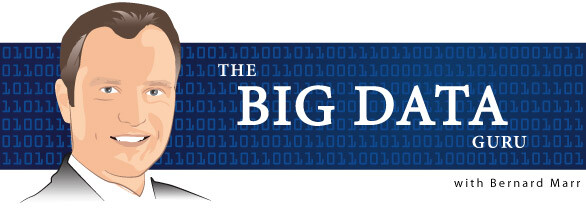
To a criminal, life must have seemed so much simpler before the advent of big data. Back then, if you weren’t caught red-handed at the crime scene, or your license plate wasn’t taken down as you made a speedy escape, you could probably feel safe.

To a criminal, life must have seemed so much simpler before the advent of big data. Back then, if you weren’t caught red-handed at the crime scene, or your license plate wasn’t taken down as you made a speedy escape, you could probably feel safe.
Today, in a world of video analysis, big data and analytics, criminals must be constantly in fear of what’s going to betray them next as they go about their shady business. That camera? Their DNA left on that dropped cigarette butt? Their own smart phone? To the law-abiding citizen, the increased security of advances in crime-fighting analytics is immeasurable.
Statistics show that intelligence-driven policing using smart technology serves to reduce both crime and, just as importantly in the eyes of politicians – reduce the fear of crime. The simple fact is, Dickens’s Artful Dodger would have a difficult time purse snatching and pickpocketing today as he did in Victorian London. Even if he wasn’t spotted at the time by his victim or a camera operator, and made a clean getaway, video images can now be used to identify individuals by comparing the image with similar images available on the Internet or social media sites. Even criminals have Facebook profile pictures that can identify them using facial recognition technology. The detective of the future will be able to find out everything there is to know about him, simply from one photographic image.
As well as video images, which are increasingly being recorded in public places across the world, police forces have been compiling databases of offender DNA samples to compare with those taken from crime scenes. The UK was the first, and its Police National Computer now contains details of over 9 million individuals – nearly a sixth of the population – as well as details of 50 million drivers taken from the records of the Driver and Vehicle Licensing Agency. Another UK initiative which involved positioning CCTV cameras with automated number plate recognition (ANPR) technology around every road into and out of a town, was referred to by police as their “Ring of Steel”. The cameras record the number plate, take a photo of the car and passengers and record the direction of travel. This is building up a huge database which police forces have started to interrogate using big data technology, to e.g. correlate vehicle movements with crimes.
In the United States, addressing gun crime is a more urgent political priority – leading to some interesting applications of big data technology. One project, known as ShotSpotter, provides real-time GPS reports whenever a gun is fired, from a network of sensors positioned across a city or district. In essence the system analyses the entire soundscape of the city and identifies the distinctive sound noise of a gun being fired. This provides the police with ‘real-time’ reporting of any gunfire. There is talk of expanding the system to include video footage – instantly activating cameras to capture footage the second a trigger is pulled. The project has received some opposition from America’s gun lobbyists though – who are generally no keener on giving up their personal data to the authorities than they are on giving up their weapons. However the results in one New York area are said to show a 90% reduction in gun crime incidents since the system was installed.
Law enforcement is constantly finding new ways to use technology and big data in the fight against crime. In Silicon Valley, biometric technology is creating guns that will only fire when held by someone legally entitled to do so. CCTV cameras are no longer impotent, immobile observers – they are commonly used in police cars and carried by officers to create a permanent digital record of everything going on around them, and are increasingly taking to the skies, attached to remote controlled drone aircrafts.
All of this will make it harder for criminals to commit crimes and might eradiate traditional crime all together. However, criminals have always found new ways of doing their ‘business’. Over recent years we have witnessed criminality moving off the streets with a huge increase in the amount of credit card and online identity fraud. But even there new big data algorithms are being developed to detect fraudulent behaviours in real time. Overall, big data and analytics are changing and improving the way we fight crime. I would like to argue that big data and analytics is making our world a safer place. What do you think?
—–
Finally, please check out my other posts in The Big Data Guru column and feel free to connect with me via Twitter, LinkedIn, Facebook, slideshare and The Advanced Performance Institute.






